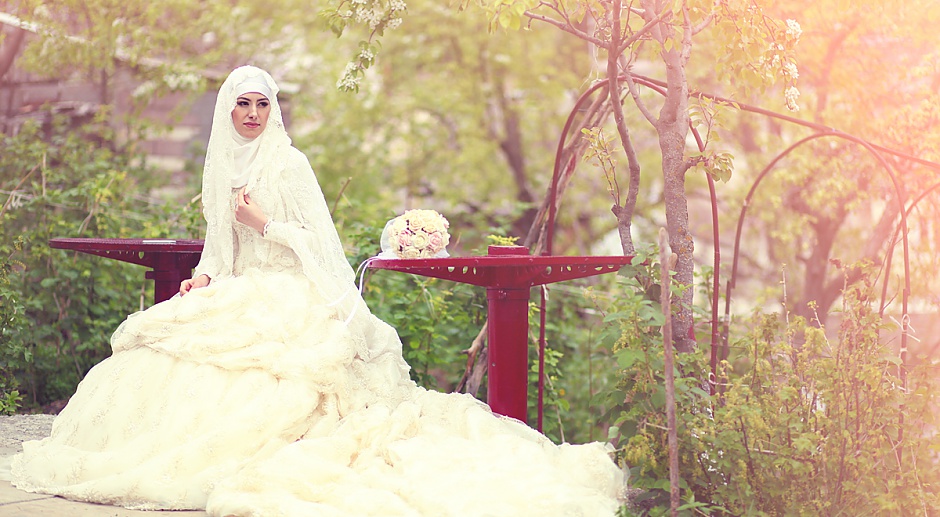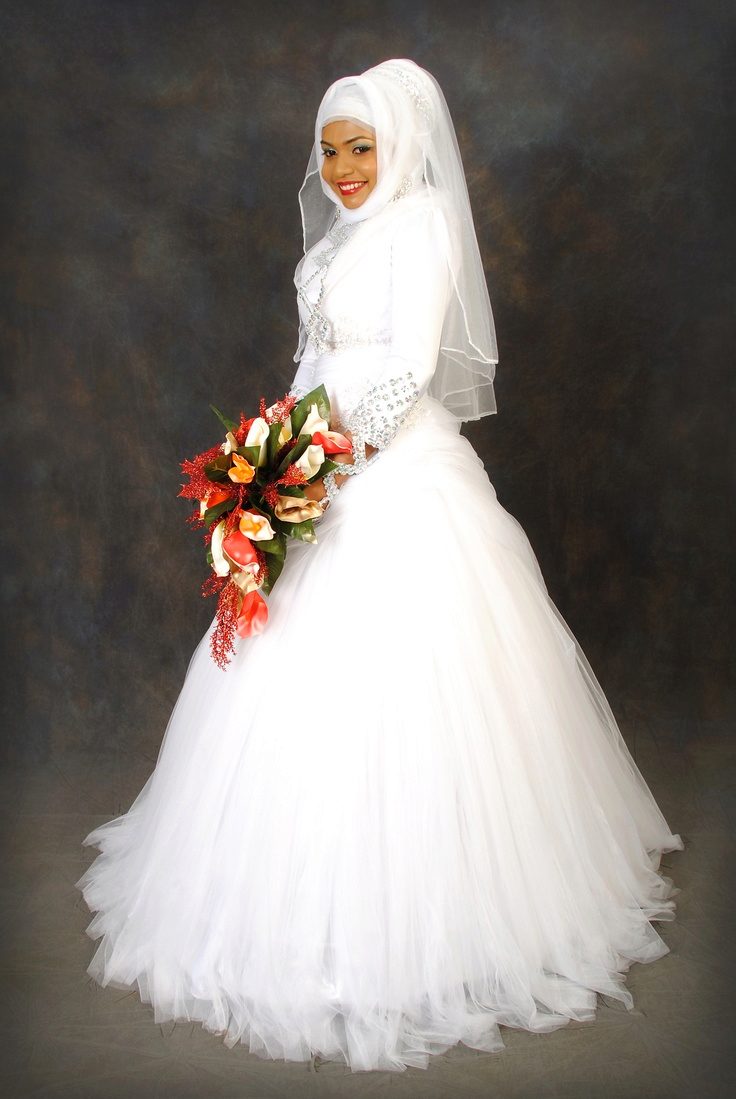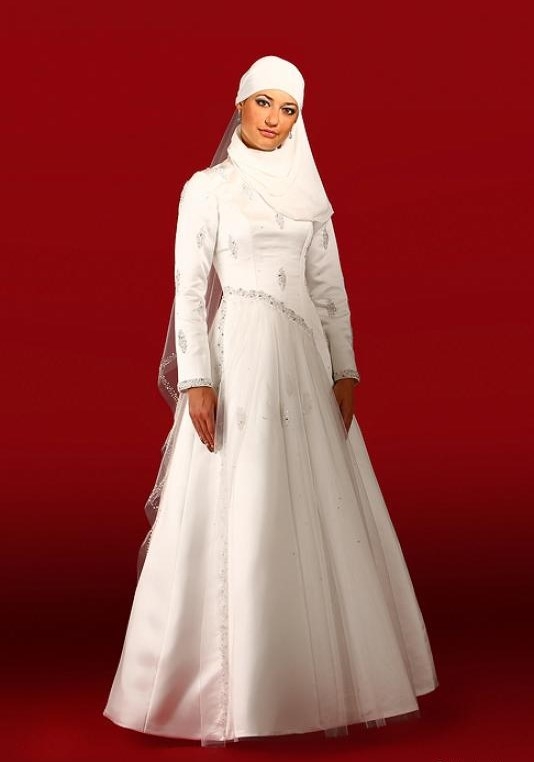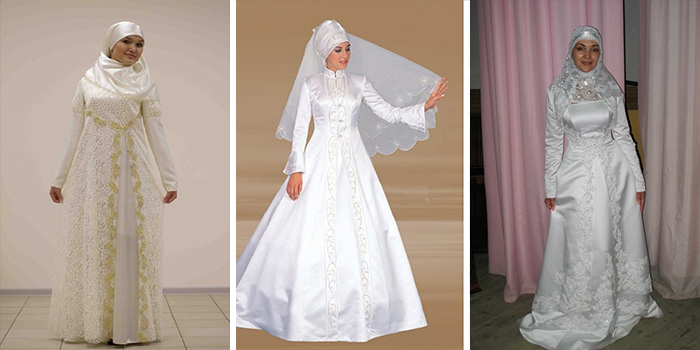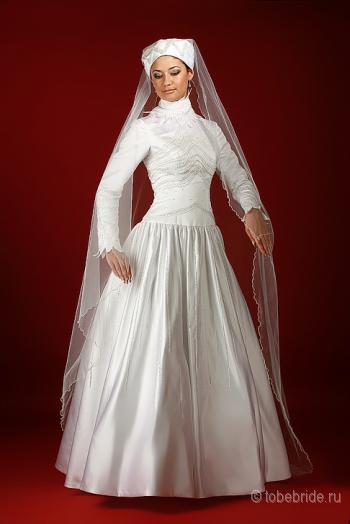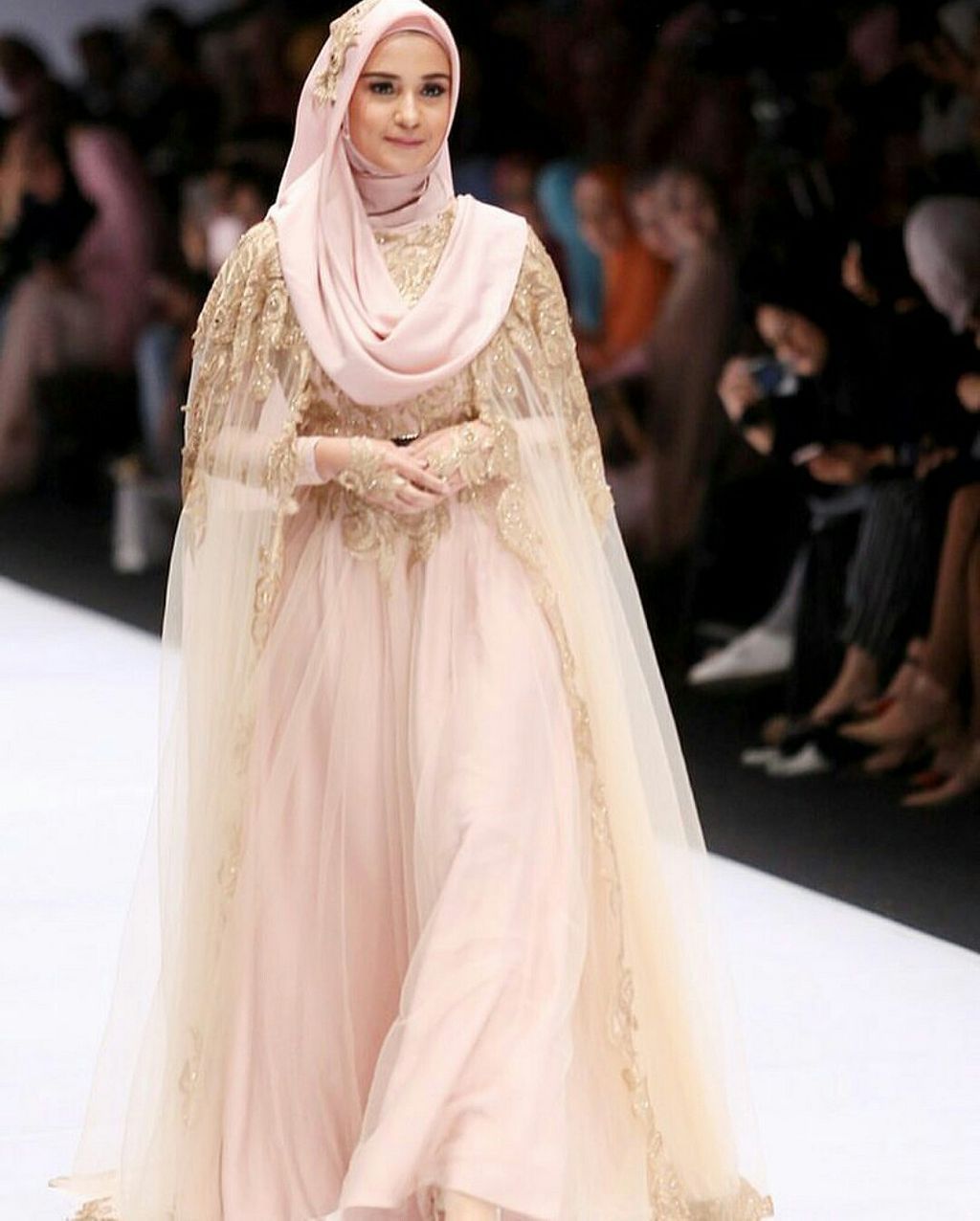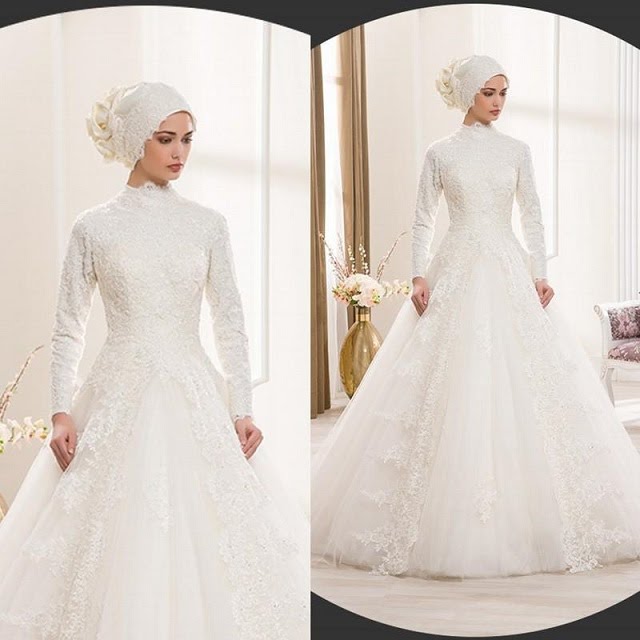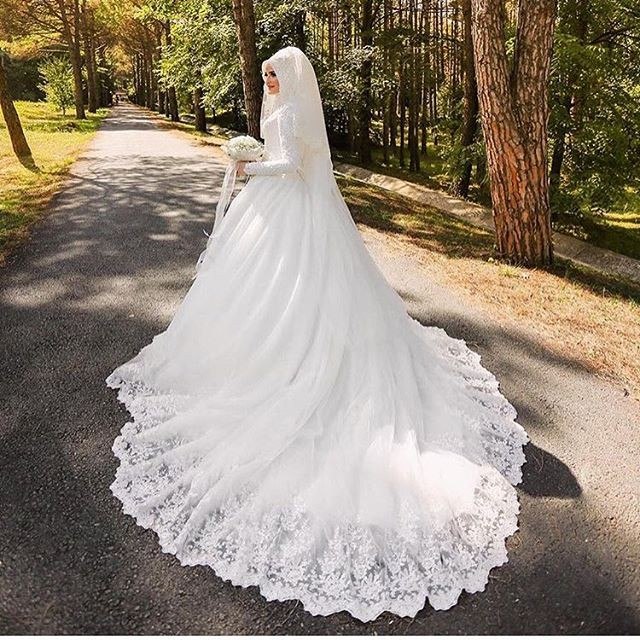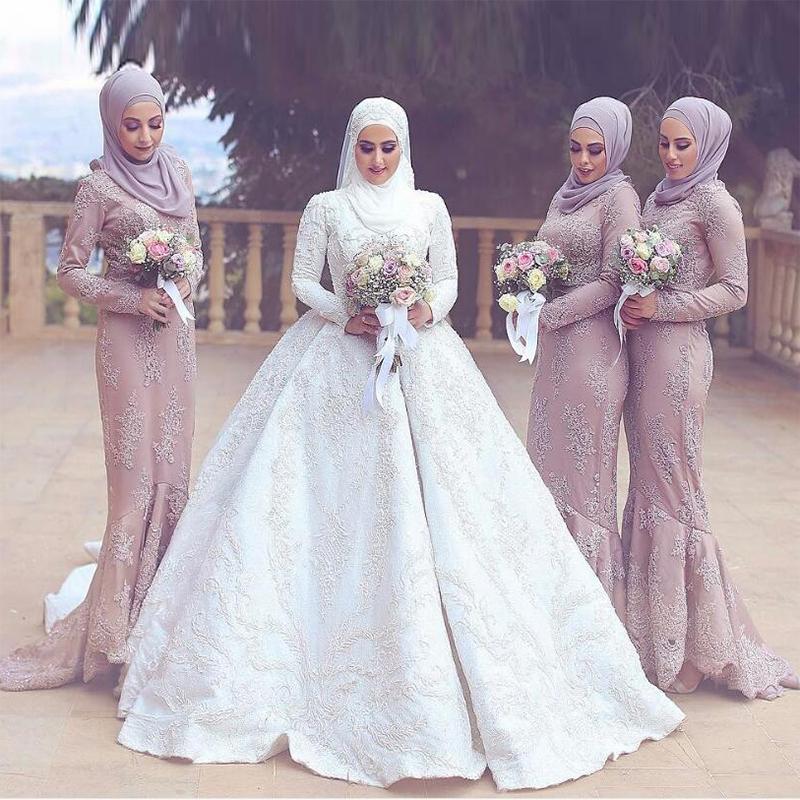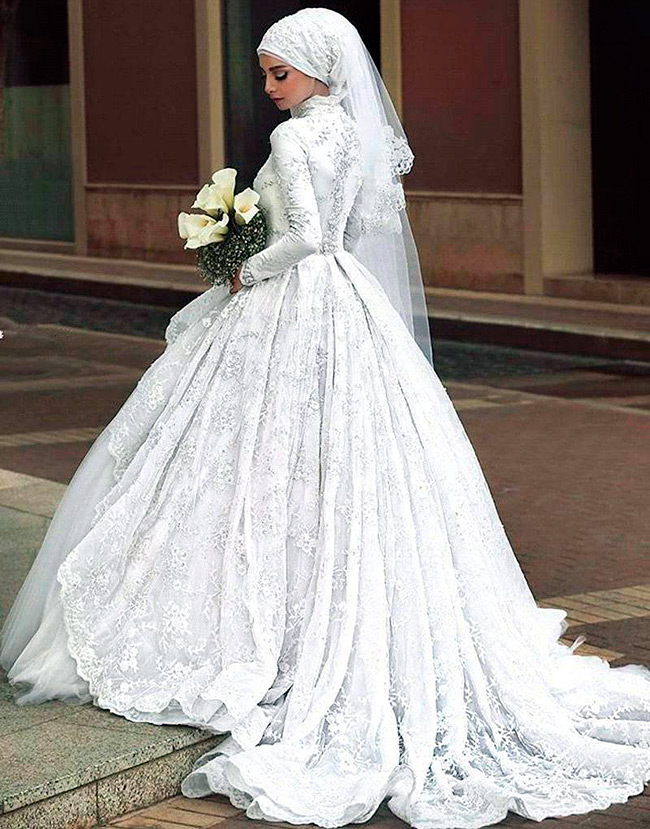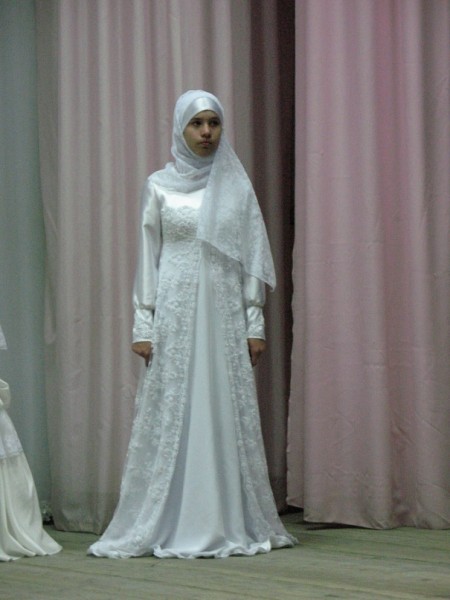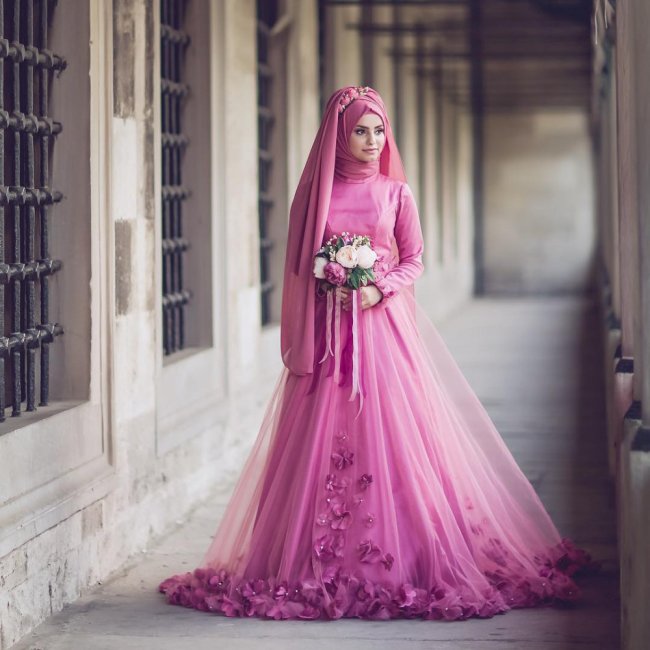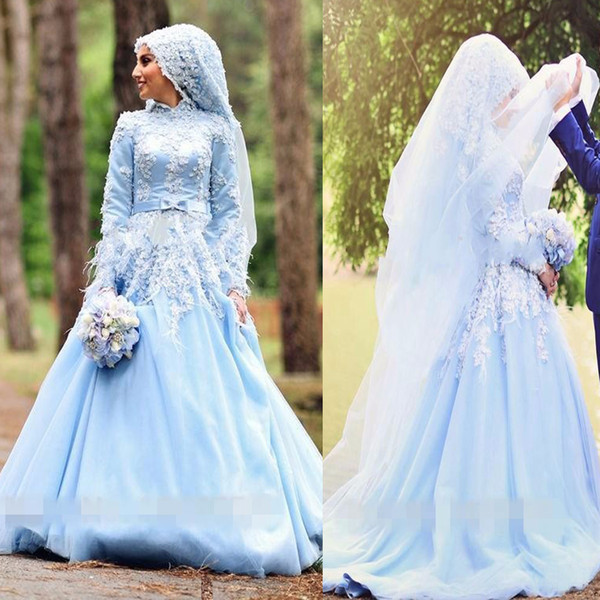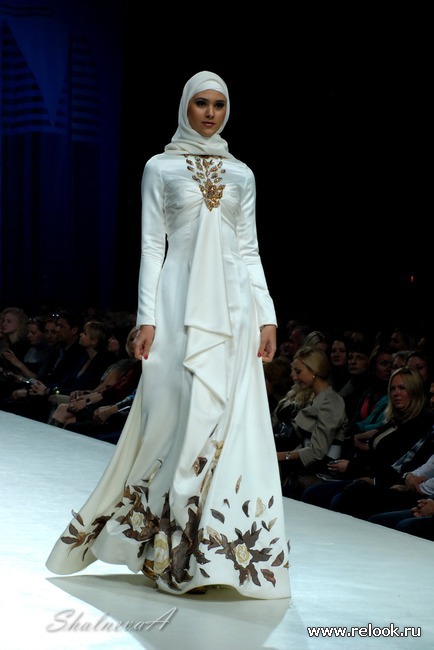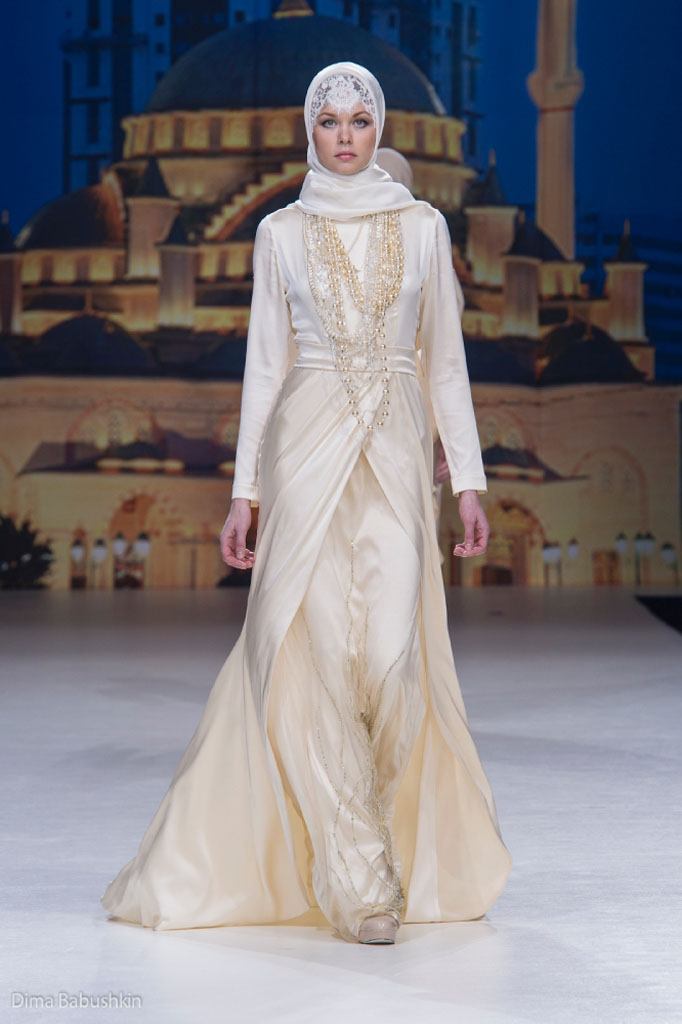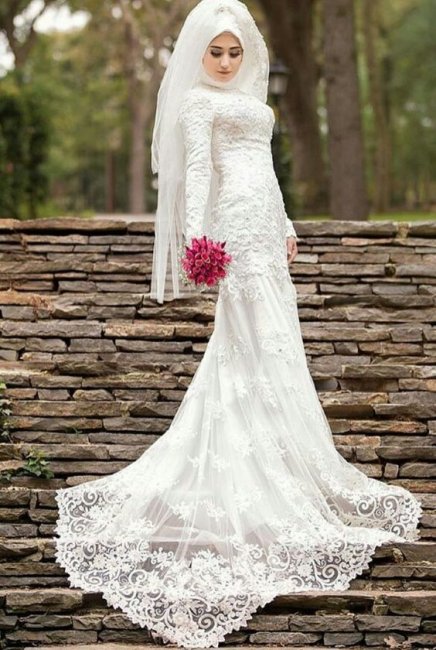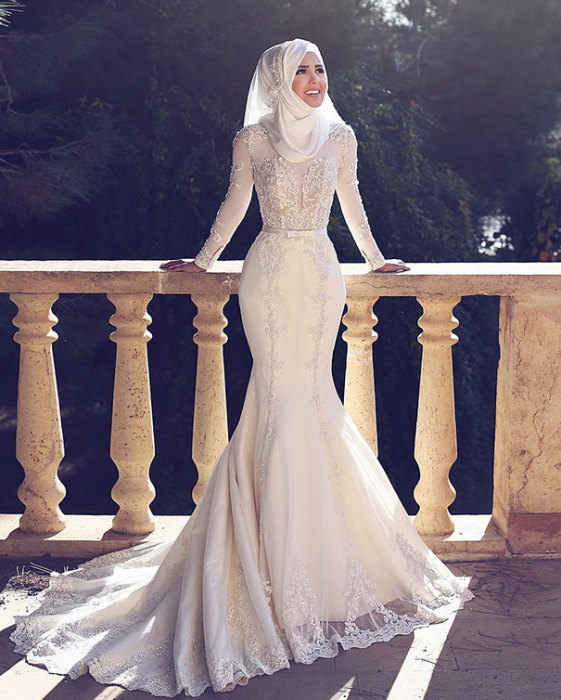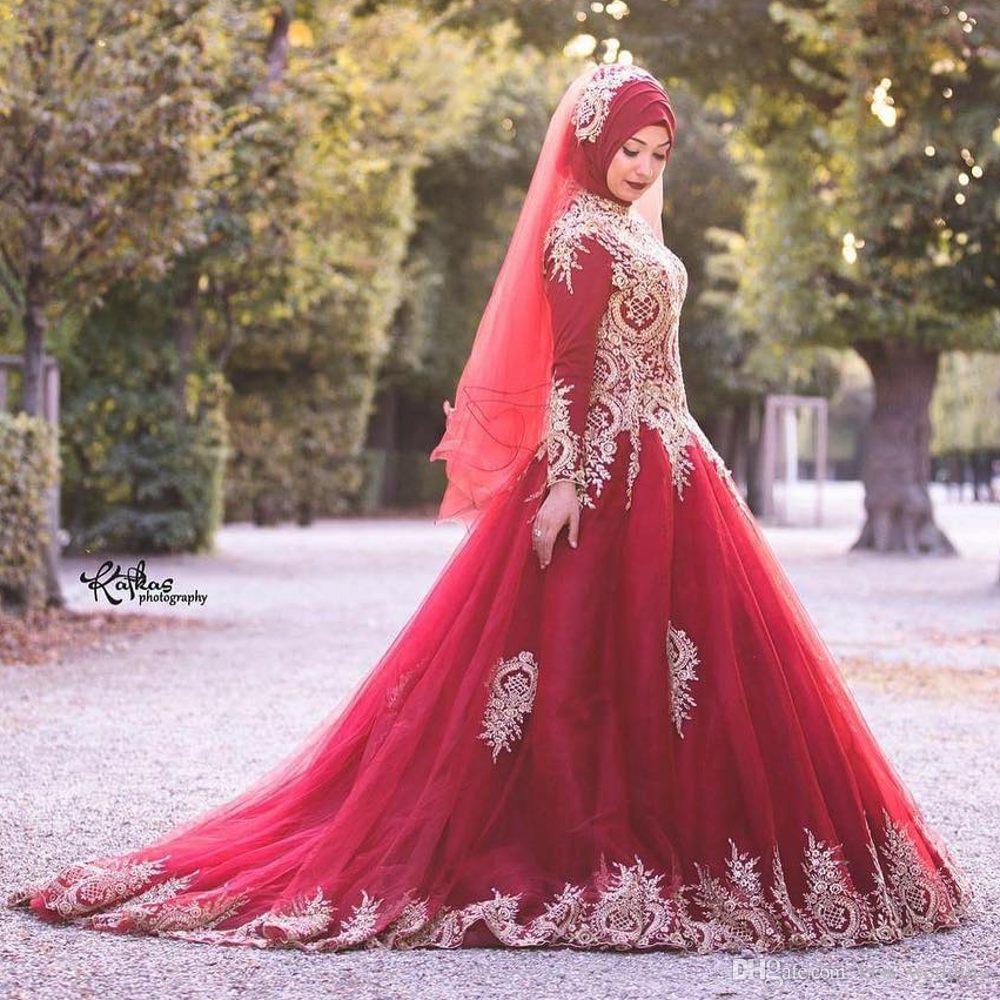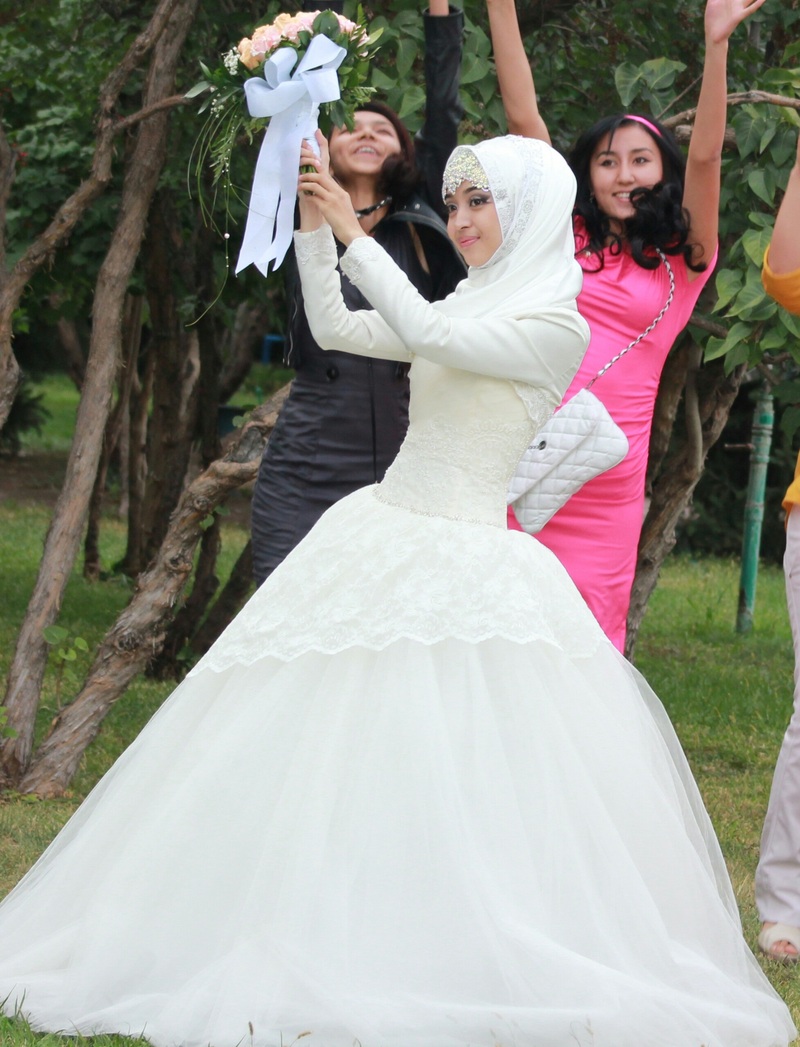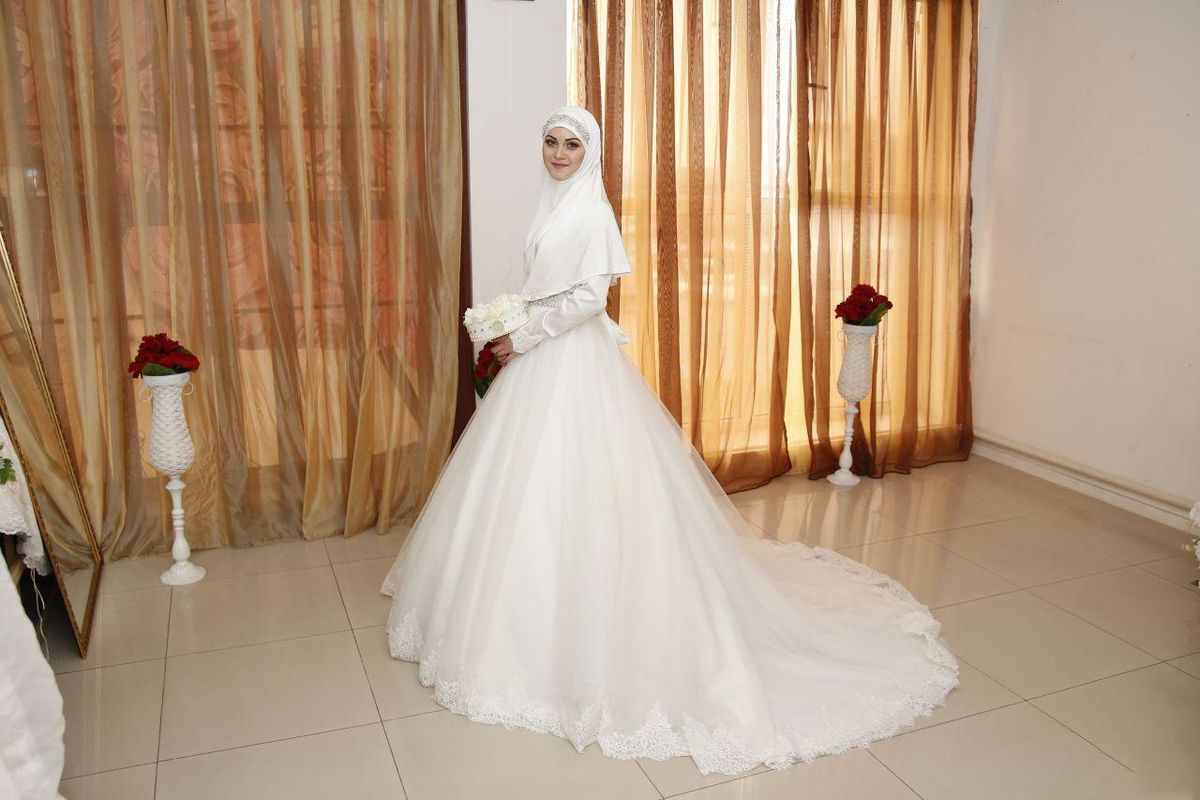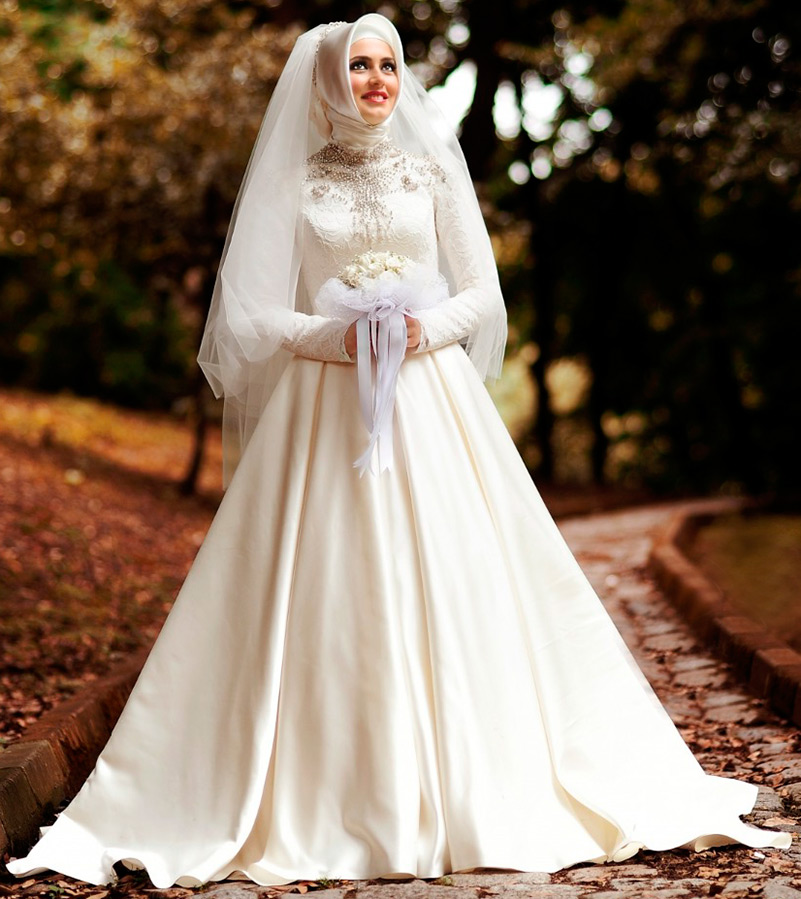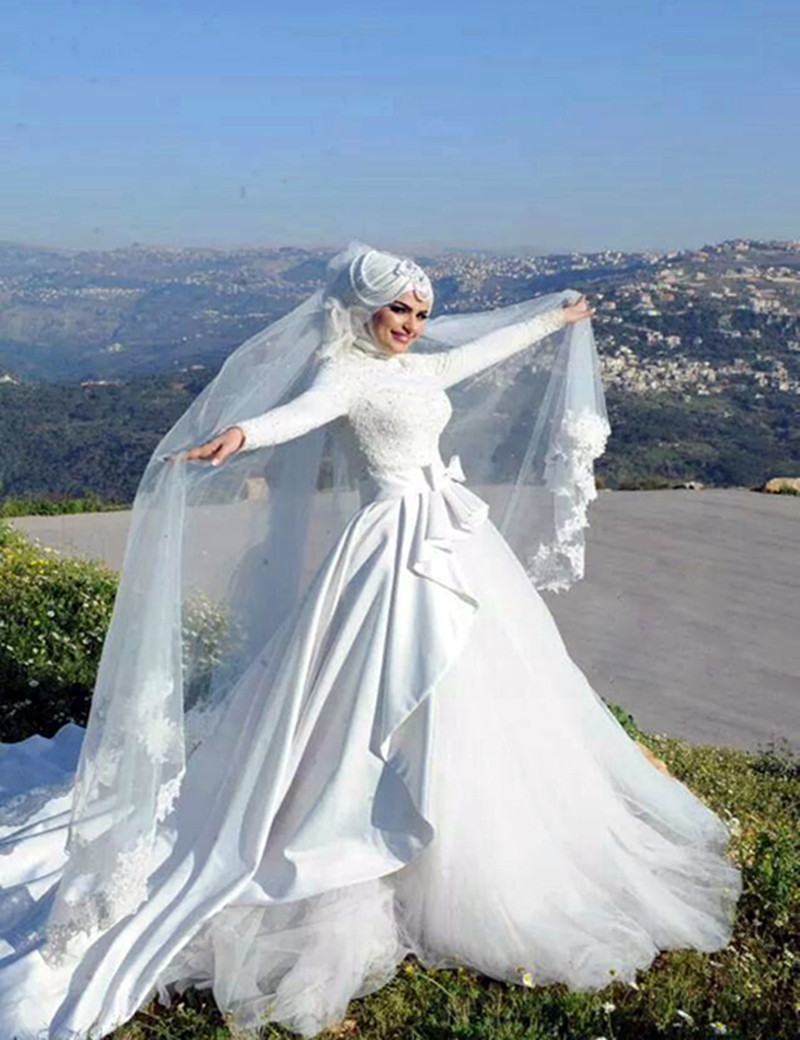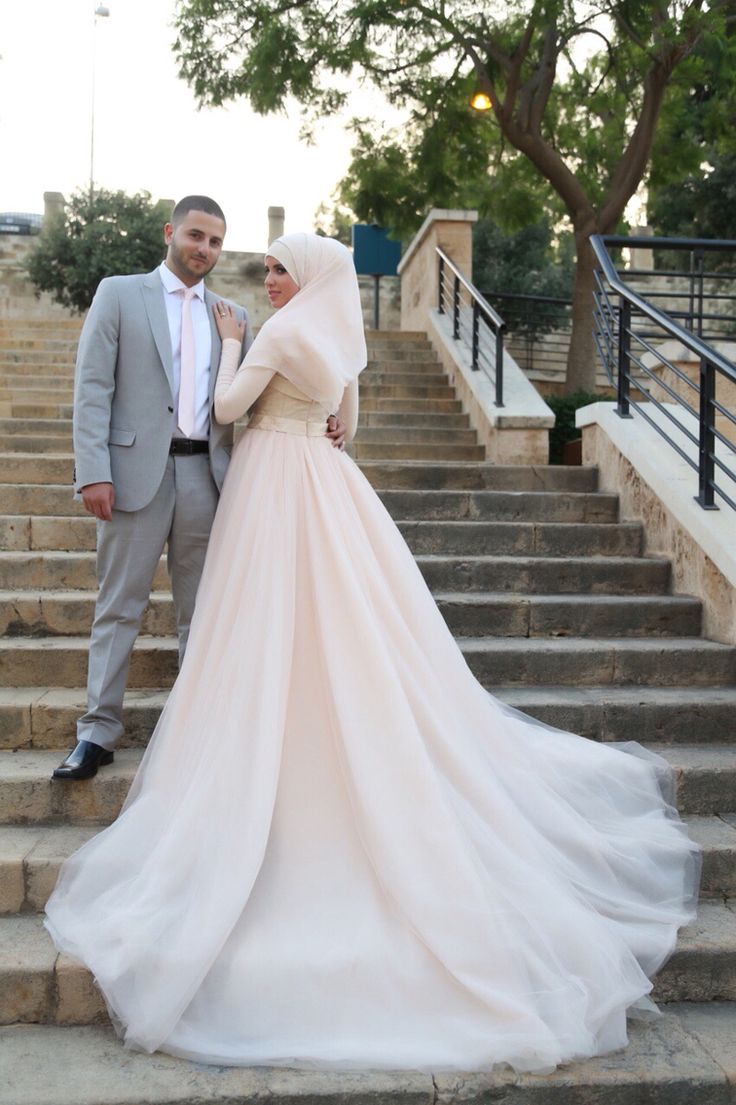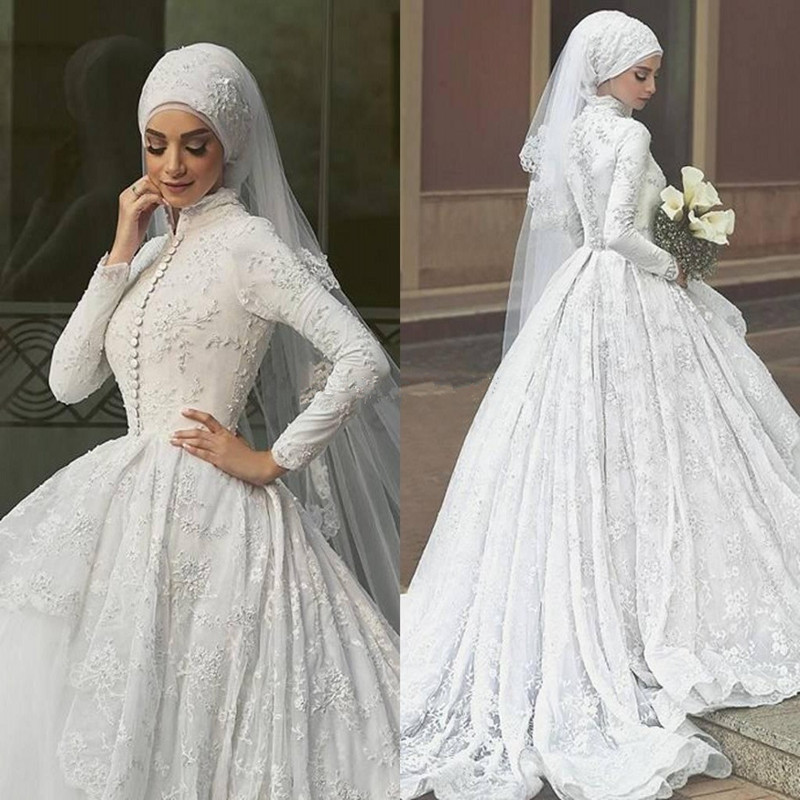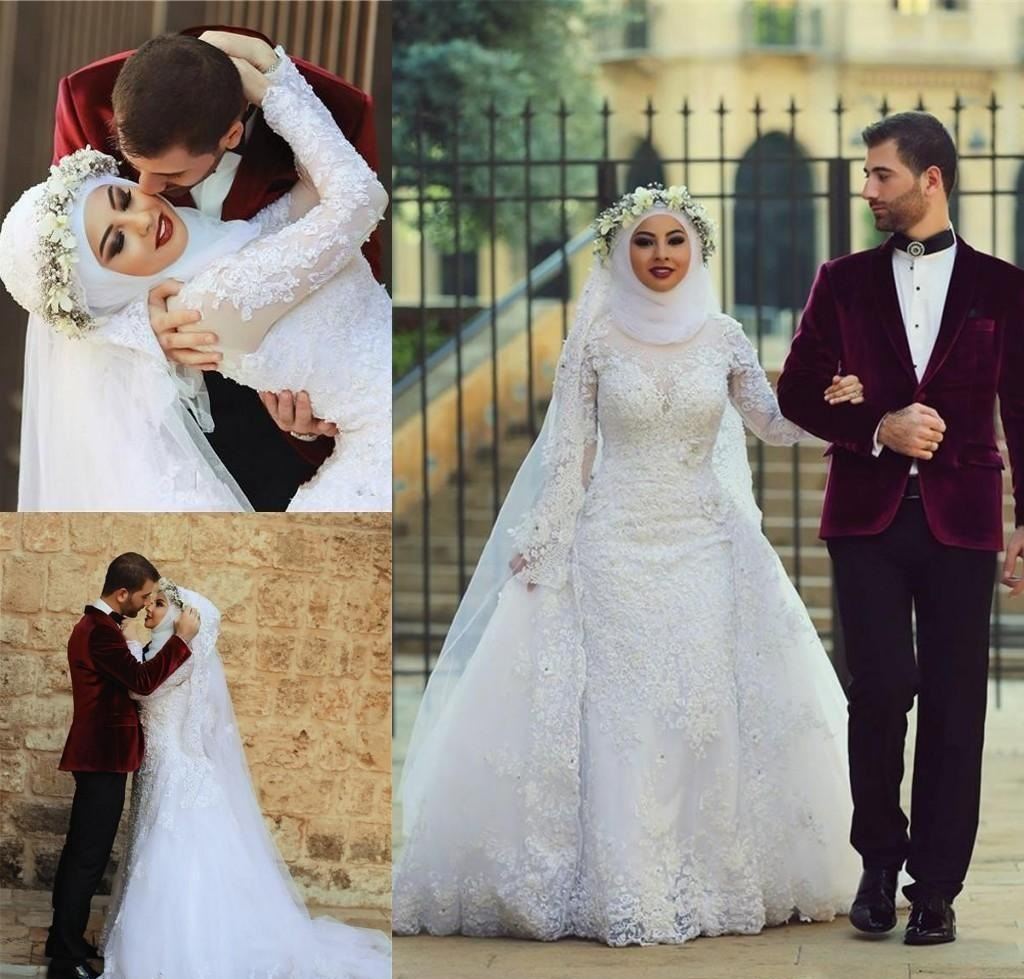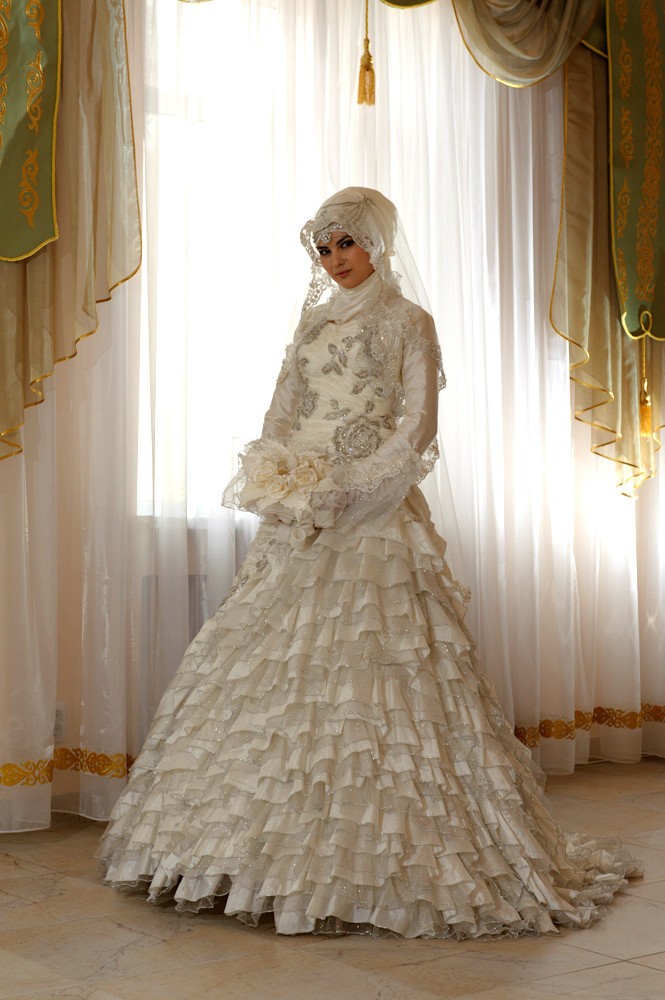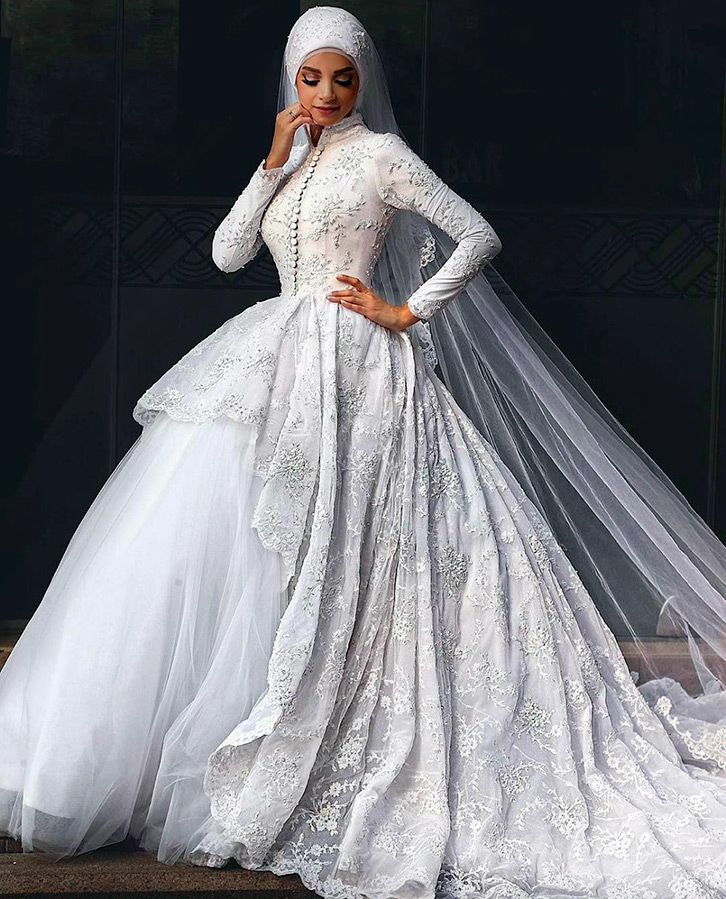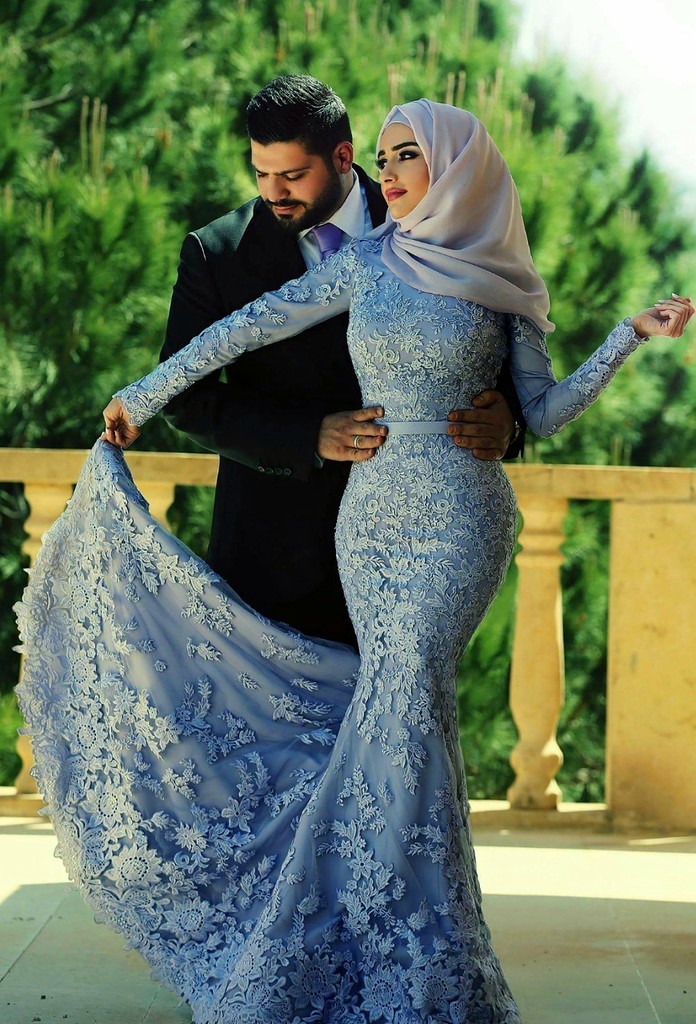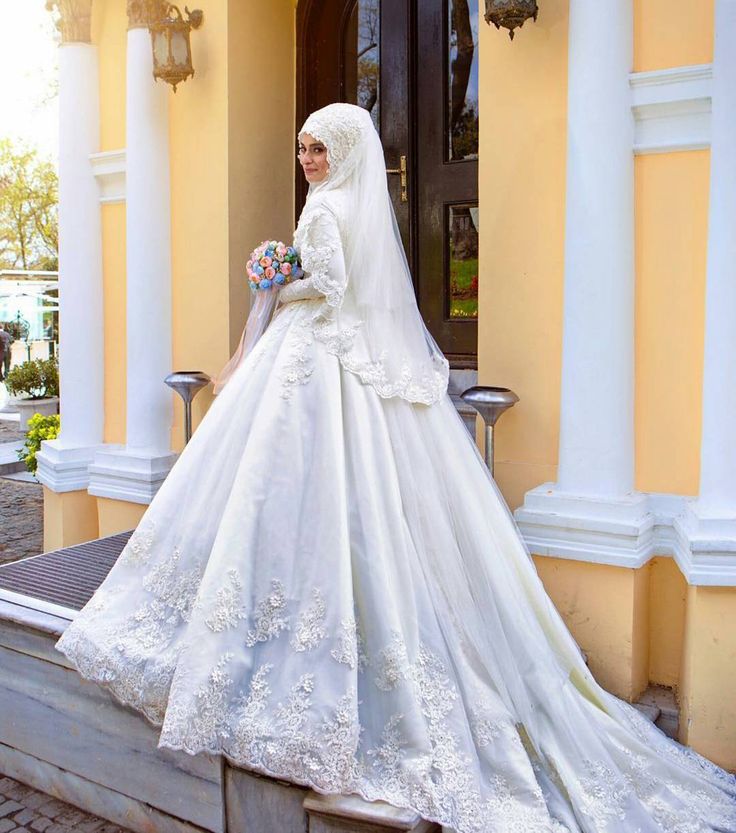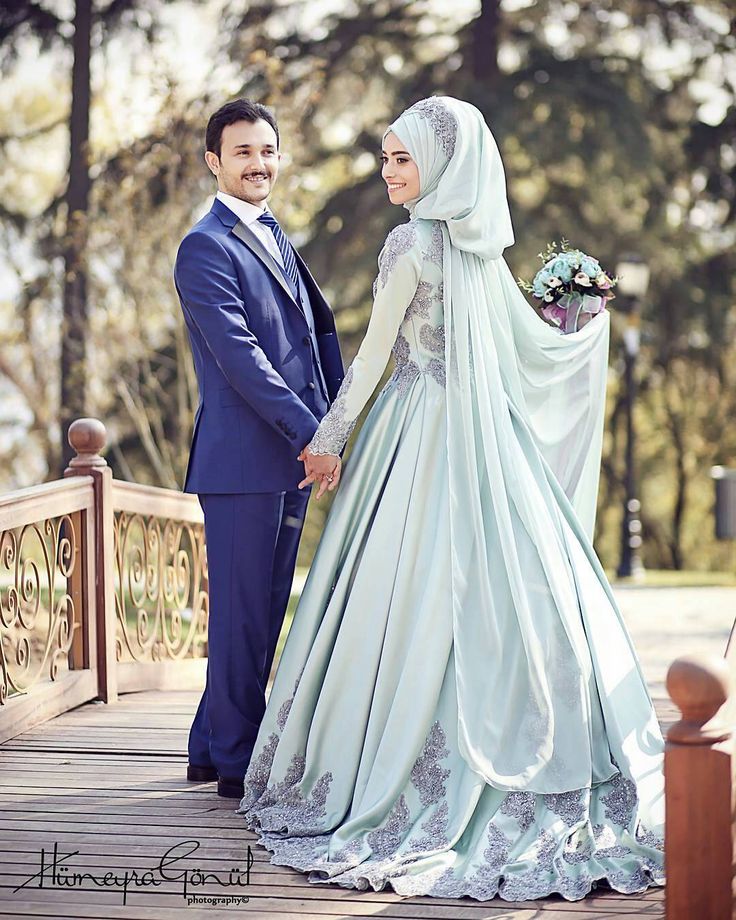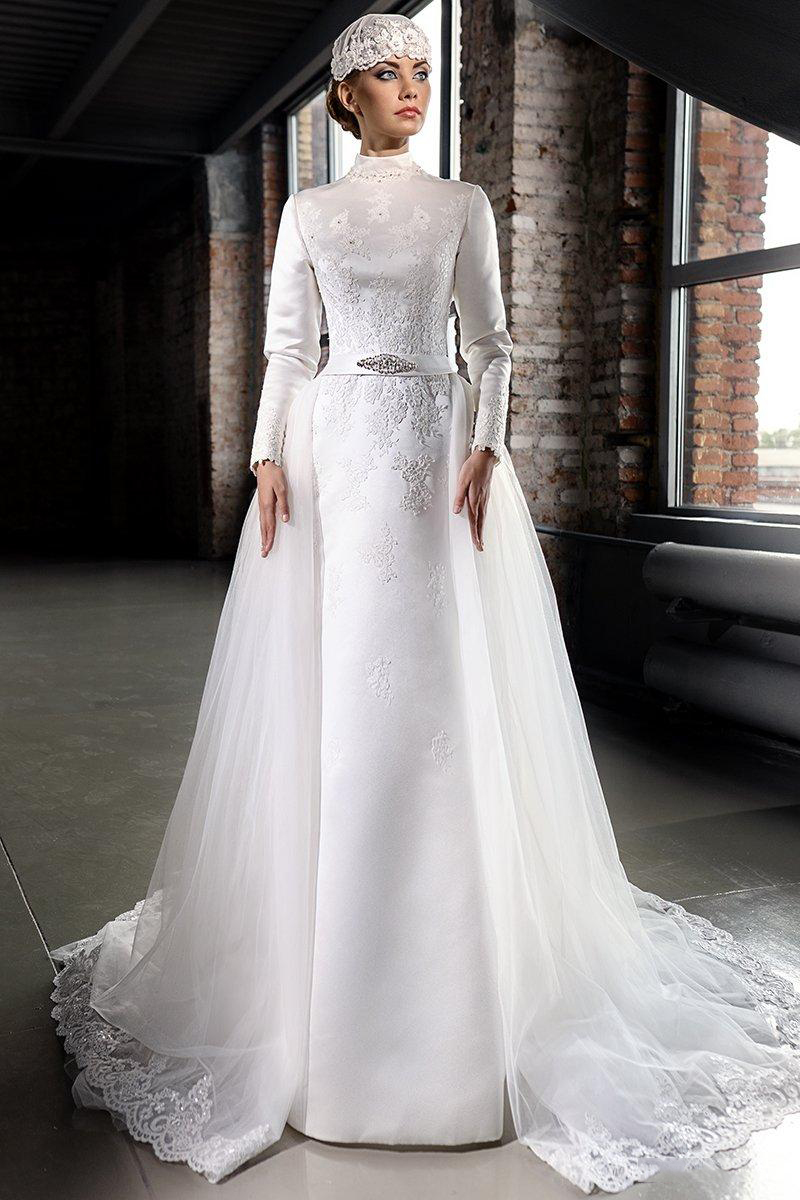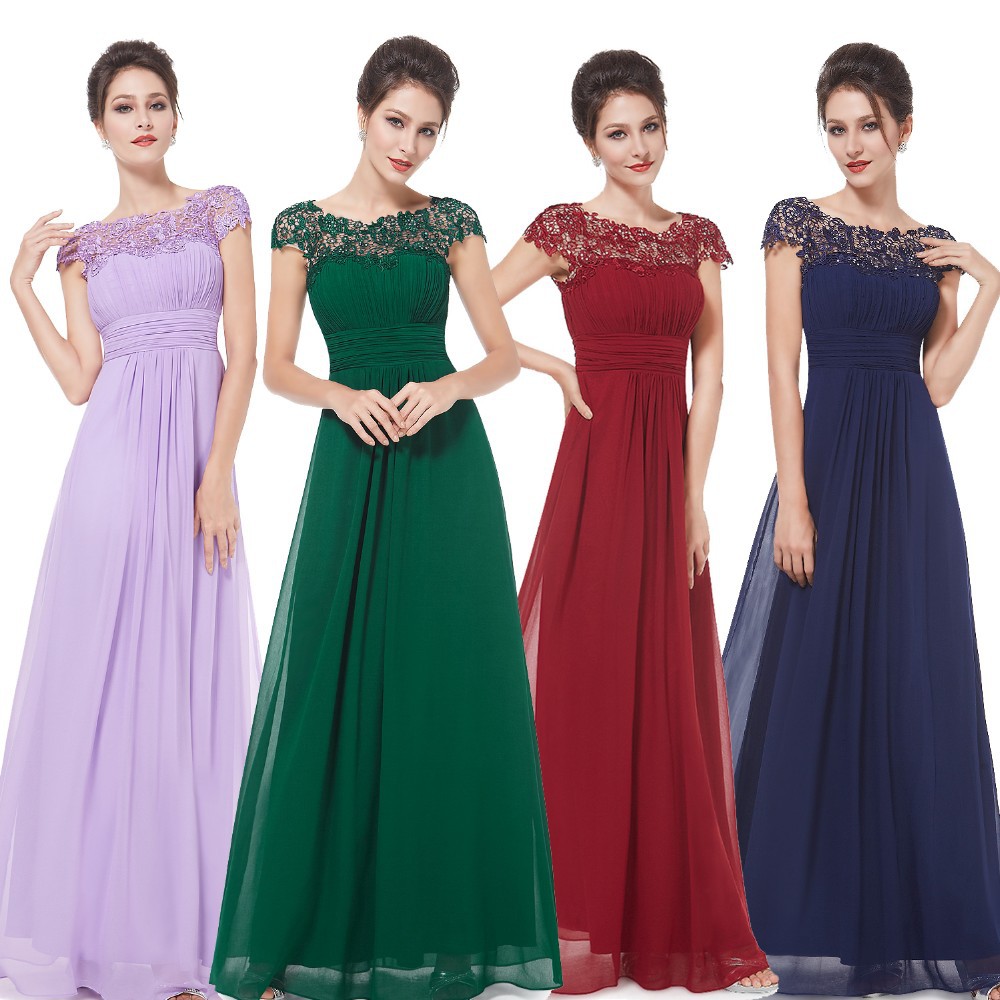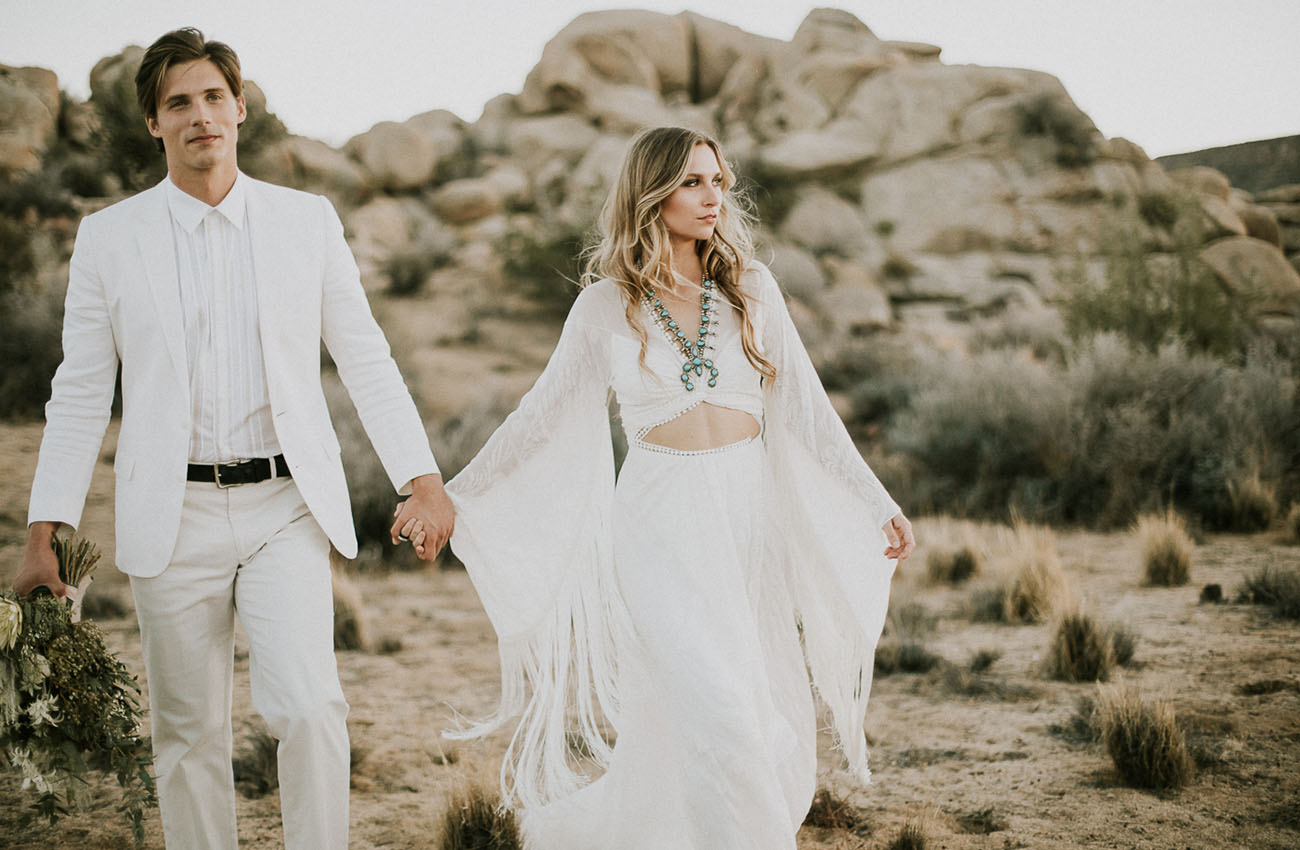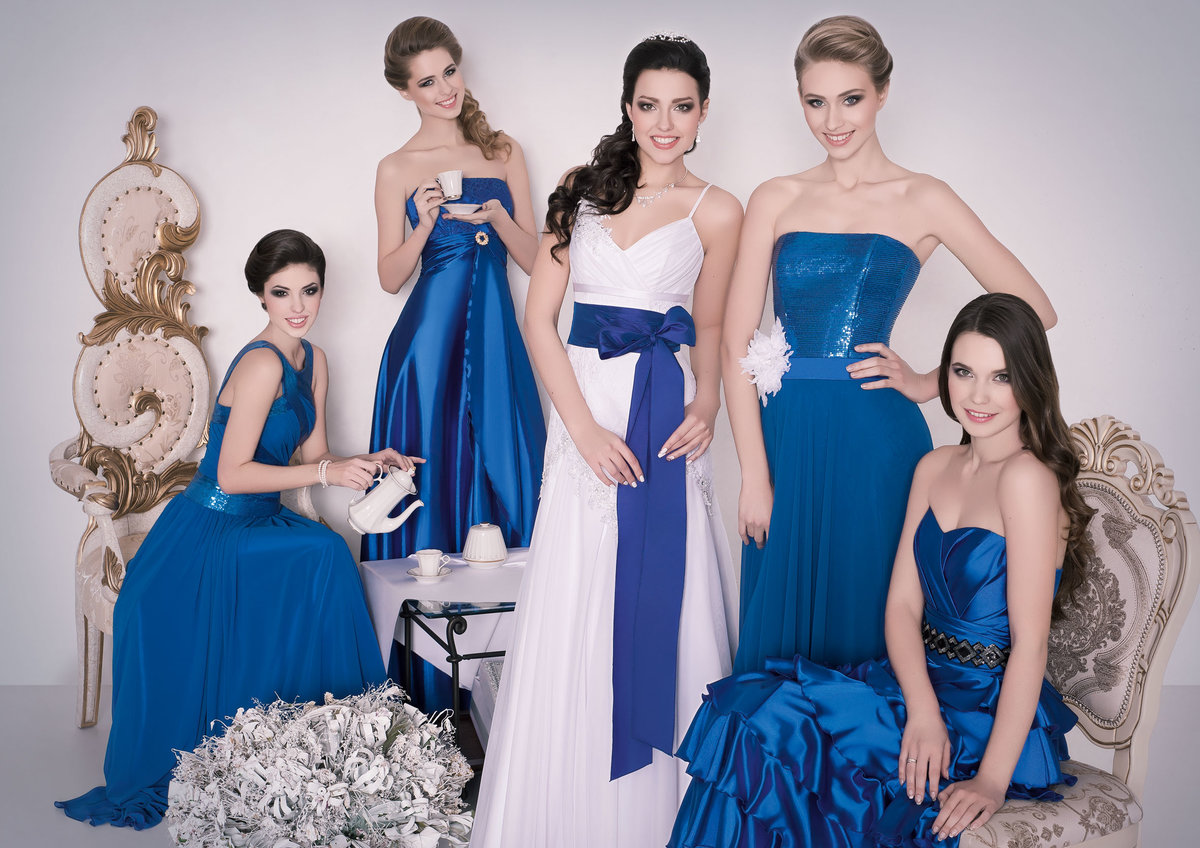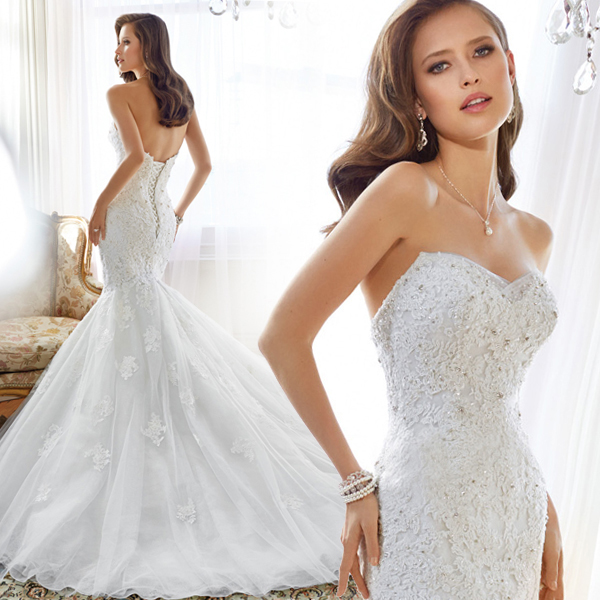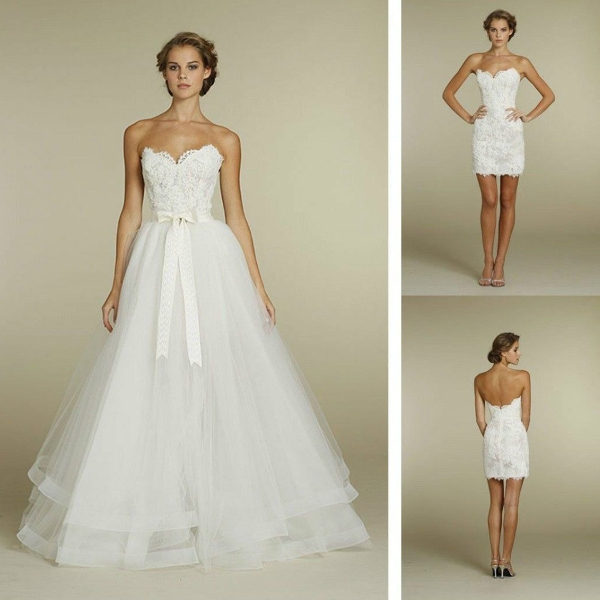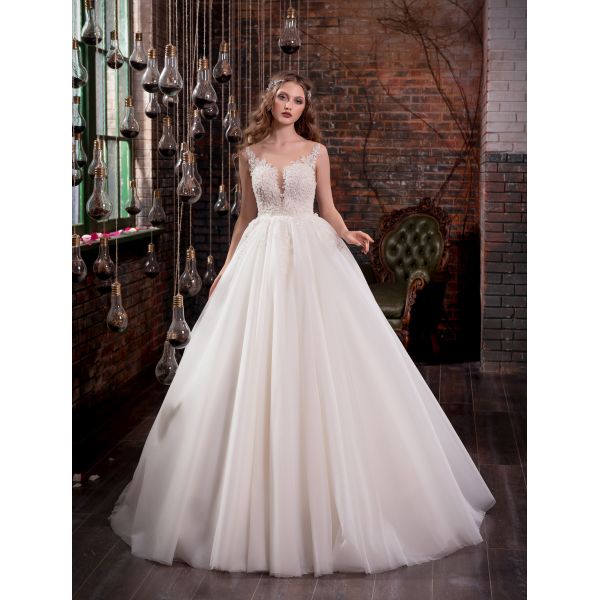The sacrament of marriage in a Muslim family is carefully guarded from prying eyes. Modesty, intimacy and even some secrecy can be seen in everything. Muslim wedding dresses are especially distinctive, the choice of which is strictly limited by religious rules and canons.
Basic requirements for the outfit
The main requirement when choosing a Muslim wedding dress is a silhouette that is hidden from prying eyes and discreet. The entire body (except for the face, hands and feet) should be carefully hidden. Openness of the shoulders, neck and arms of a Muslim woman is unacceptable.
Floor-length, with a high collar and long sleeves, traditional Muslim wedding dresses impress with their exquisite decoration. Unusual decorative elements and intricate embroidery make wedding dresses for Muslim women a work of art. The dress is made only from the best, high-quality, expensive fabrics (for example, silk or satin). The use of transparent materials is unacceptable.
The requirement that is followed without question when choosing a wedding look for a Muslim bride is the presence of long sleeves (sometimes in combination with gloves) and a high collar.
The color of the bride's dress is not tied to any canons. If desired, the clothes can be either traditional white or other shades. The most relevant colors this season are: powder, peach, gold, silver. For the young and stylish, a dress in rich tones is ideal. In Muslim countries, the image of the bride in red is welcomed. According to the strict rules of Sharia, the head must be covered. The image is complemented by a veil or hijab.
The main differences of the traditional Islamic wedding dress:
- regardless of the season and weather, the outfit must cover all exposed areas except the face, hands and feet;
- overly tight silhouettes are prohibited;
- rich decor;
- the limitless range of colors of Muslim wedding dresses;
- It is mandatory to have a headdress to cover the bride's hair.
Varieties
The boundaries of what is permitted in choosing a Muslim dress for a wedding are determined by each nationality professing the religion of Islam. For some, deviations from strict requirements are possible, and somewhere a girl can choose only a closed white dress.
But despite the restraint of the Muslim wedding dress style, the bride's dress is a work of art that is often passed down from generation to generation. The dress is embroidered with pearl beads and precious stones, and the embroidery is done with silver or gold threads.
The silhouette is carefully selected. At the same time, the strict outfit subtly emphasizes the femininity of the Muslim bride.
Some secrets for choosing a Muslim wedding dress:
- Slender girls will appreciate the fishtail silhouette, which outlines the hips and narrow waist;
- Curvy brides are better off choosing dresses with full skirts.
Traditional
The classic Muslim bride's dress combines a straight, slightly fitted silhouette, long sleeves, and a closed neckline. Not tight, but delicately graceful silhouette very neatly emphasizes the female figure. It is in this form that a girl can look both strict and femininely attractive. The dress is made of high-quality, expensive fabrics (satin, silk) with the addition of textured openwork materials (for example, guipure).
The traditional image of a Muslim bride is impossible without an elaborately embroidered silk scarf (hijab) that covers the hair and ears.
Lush multi-layered
Airy, amazingly beautiful dresses with a multi-layered skirt based on chiffon will help to create an attractive, stylish and very fashionable image. The skirt of the dress is made of chiffon, gathered in layers in the form of a rosebud. In combination with a bodice embroidered with pearls and beads, you get a very stylish, amazingly beautiful outfit.
A-line silhouette
The fitted bodice and flared bottom of the dress help to gracefully and very delicately outline the graceful figure of the bride. The skirt flares from the waist. A-line dresses are preferred by Muslim brides, noting the amazing combination of modesty and elegance in such an outfit. The outfit is decorated with gold or silver embroidery, complemented by a long train.
Fitted
A fitted lace dress wonderfully emphasizes the youth and innocence of the bride. Closed shoulders and arms soften the eye-catching lines of the female figure, making the bride's image more elegant and sophisticated. It is worth noting that the fitted silhouette is extremely relevant this season. Precious stones and bead embroidery add luxury to the dress. Convex decor creates a unique effect of volume on the clothes. The fitted silhouette is often complemented by a fishtail skirt. This image looks very gentle, without violating the strict Muslim canons of women's clothing.
Decor options
Muslim wedding dresses, photos of which amaze with their beauty, are distinguished by rich decor. Decoration with precious stones, beads, rhinestones and pearls, embroidery with gold and silver threads create shimmering volumetric patterns all over the dress. Guipure lace fabric embroidered with beads is especially popular among Muslim brides. The decor can be either one color or multi-colored. This helps to create amazingly beautiful intricate patterns.
European trends in wedding fashion make minor adjustments to the Muslim bride's outfit. The outfit can be complemented with a neat stand-up collar (ideally emphasizing the beauty of the neck) or a light corset (emphasizing the bride's thin waist). Muslim brides also liked asymmetrical sleeves. Elongated at the back and slightly shortened at the front, they allow you to delicately demonstrate the girl's graceful wrists without violating strict rules.
Jewelry and headwear
The main accessory that completes the image of a Muslim bride is the hijab headdress. According to strict canons, only the future spouse and close relatives are allowed to see the hairstyle of an Islamic bride. During the wedding celebration, the head is necessarily covered with a hijab. This light scarf is made of flowing silk material. The hijab is skillfully decorated with embroidery with gold threads, lace, and precious stones.
As an option, instead of a hijab, the bride's head can be covered with a wide scarf or kerchief, or a veil with a veil.
For the wedding, an Islamic bride can choose the following accessories:
- a small, elegant bouquet of flowers;
- a miniature handbag, the color and decoration of which match the dress;
- jewelry: bracelets, rings, necklaces. Fine jewelry decorated with precious stones not only decorates the bride's outfit, but also determines the status of the groom's family. Earrings are present in the bride's outfit only if she wants to show them to her husband. For outsiders, earrings are hidden under the hijab fabric.
There are no strict rules for choosing shoes for a Muslim bride's wedding look. The main thing is that they are comfortable (the wedding ceremony is quite long) and closed (the shoes support the overall style of the Muslim wedding dress).
Classic and reserved does not mean boring and faceless. Despite the existing restrictions and prohibitions, Muslim wedding fashion is multifaceted and gives every bride the opportunity to choose the perfect wedding dress.
Video
https://youtu.be/2PjOQcw5U8I

